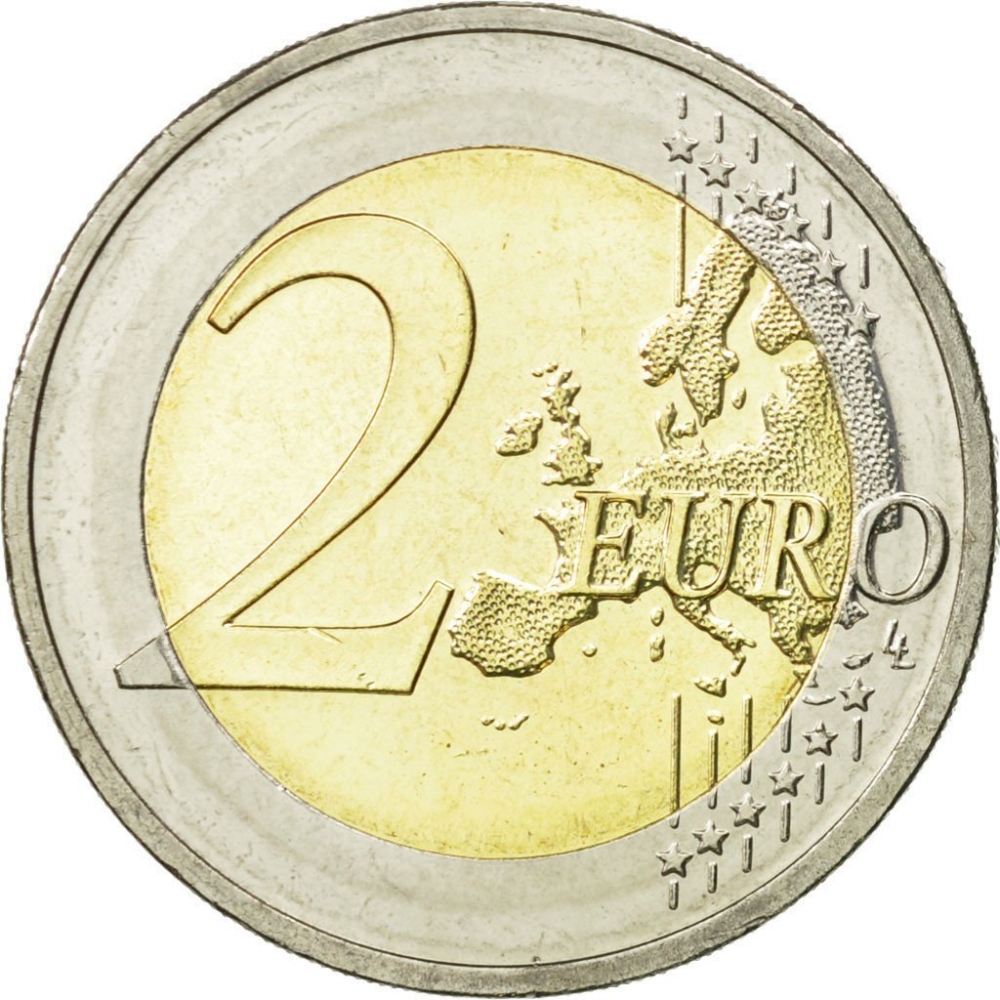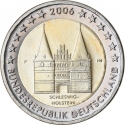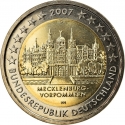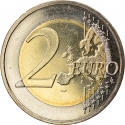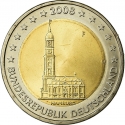You are about to finish your registration. Please check your mailbox (including spam folder). There should be a letter with a confirmation link. Check setting to make sure that your e-mail address is correct.
Send letter againDescription
The Federal Republic of Germany has 16 states (German: Bundesländer). Since 2006, Germany issues every year a Bundesländer coin for a specific state that has that’s year’s presidency of the Bundesrat.
Bremen, officially the Free Hanseatic City of Bremen, is the smallest and least populous of Germany's 16 states. The state consists of the city of Bremen as well as the small exclave of Bremerhaven in Northern Germany, surrounded by the larger state of Lower Saxony.
At the unwinding of the Holy Roman Empire in 1806 the Free Imperial City of Bremen (as of 1646, after earlier privileges of autonomy of 1186) was not mediatised but became a sovereign state officially titled Free Hanseatic City of Bremen. Its currency was the Bremen thaler (until 1873). In 1811 the First French Empire annexed the city-state. Upon the first, albeit only preliminary, defeat of Napoléon Bonaparte, Bremen resumed its pre-1811 status as city-state in 1813.
The Vienna Congress of 1815 confirmed Bremen's—as well as Frankfurt's, Hamburg's, and Lübeck's—independence. Bremen became one of 39 sovereign states of the German Confederation. In 1827 the state of Bremen bought the tract of land from the Kingdom of Hanover, where future Bremerhaven would be established. Bremen became part of the North German Confederation in 1867 and became an autonomous component state of the new-founded German Empire in 1871.
Bremen, which in 1935 had become a regular city at the de facto abolition of statehood of all component German states within the Third Reich, was reestablished as a state in 1947. In 1949 the city-state joined the then West German Federal Republic of Germany.
Obverse

|
Depicts the Bremen City Hall and the Bremen Roland statue. State name, engraver's initilas and date on the bottom. National identifying mark (D for Deutschland / Germany) on the outer ring above. Mintmark (A for Berlin, D for Munich, F for Stuttgart, G for Karlsruhe, J for Hamburg) on the top left. D |
|---|---|
Reverse

|
A geographical map of Western Europe spans the outer ring and inner core on the right side of the coin. The inscription 2 EURO is superimposed over the map of Europe, with the numeral “2” located in an open field representing the eastern Atlantic Ocean. 2 EURO |
| Edge |
UNITY AND JUSTICE AND FREEDOM in German, Germany's national motto and the beginning of Germany's national anthem, followed by the Federal Eagle EINIGKEIT UND RECHT UND FREIHEIT |
2 Euro
KM# 285 Schön# 278 Jaeger# 549
Swap now (5 offers)
Characteristics
| Type | Commemorative Issue (Circulating) |
| Material | Bi-Metallic |
| Ring | Cupronickel |
| Center | Nickel Brass |
| Weight | 8.5 g |
| Diameter | 25.75 mm |
| Thickness | 2.2 mm |
| Shape |
|
| Alignment | Medal |
| Mints |
Bavarian Central Mint (D) Berlin State Mint (A) Hamburg Mint (J) Karlsruhe State Mint (G) Stuttgart State Mint (F)
|

